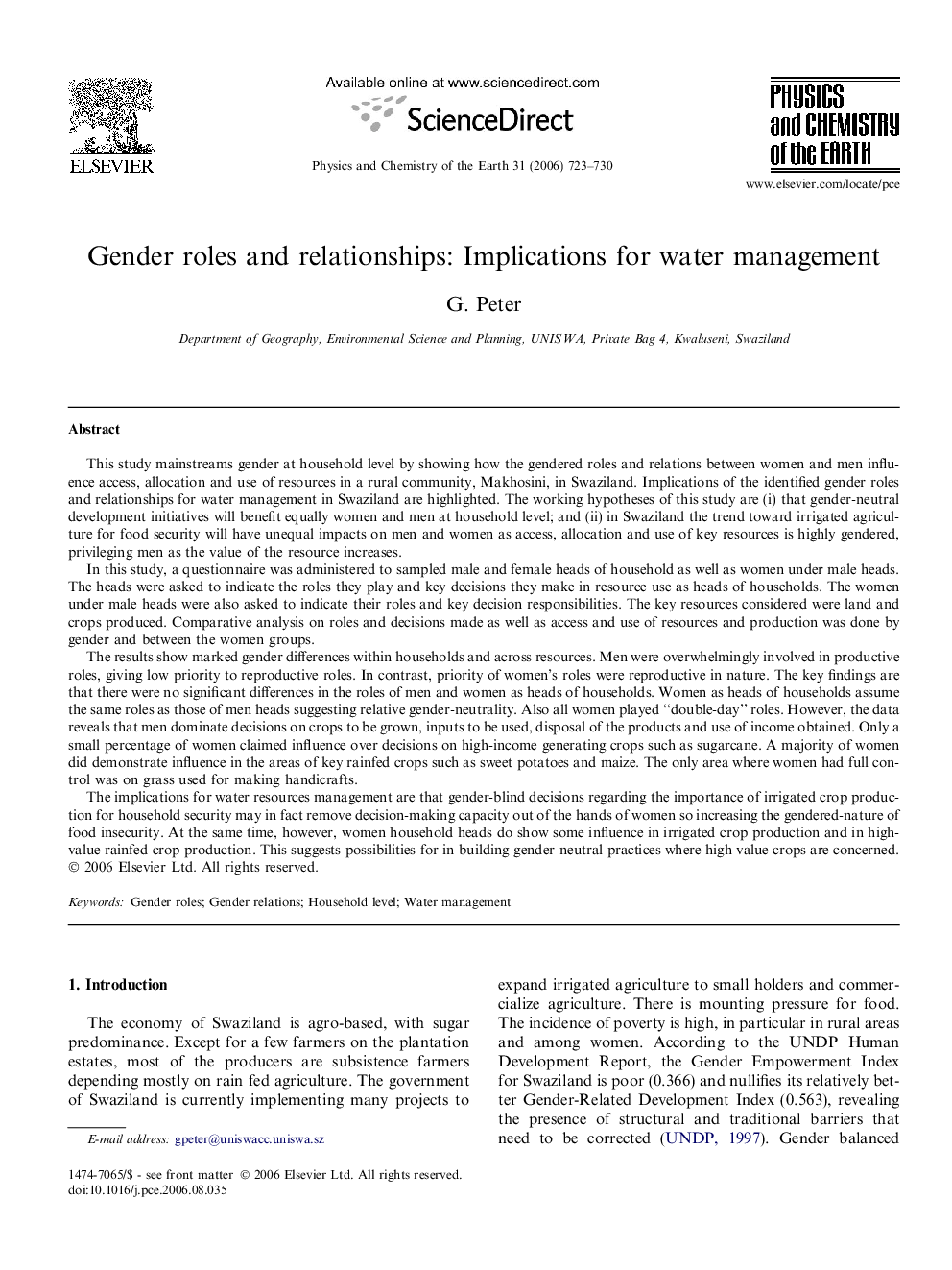| Article ID | Journal | Published Year | Pages | File Type |
|---|---|---|---|---|
| 4722167 | Physics and Chemistry of the Earth, Parts A/B/C | 2006 | 8 Pages |
This study mainstreams gender at household level by showing how the gendered roles and relations between women and men influence access, allocation and use of resources in a rural community, Makhosini, in Swaziland. Implications of the identified gender roles and relationships for water management in Swaziland are highlighted. The working hypotheses of this study are (i) that gender-neutral development initiatives will benefit equally women and men at household level; and (ii) in Swaziland the trend toward irrigated agriculture for food security will have unequal impacts on men and women as access, allocation and use of key resources is highly gendered, privileging men as the value of the resource increases.In this study, a questionnaire was administered to sampled male and female heads of household as well as women under male heads. The heads were asked to indicate the roles they play and key decisions they make in resource use as heads of households. The women under male heads were also asked to indicate their roles and key decision responsibilities. The key resources considered were land and crops produced. Comparative analysis on roles and decisions made as well as access and use of resources and production was done by gender and between the women groups.The results show marked gender differences within households and across resources. Men were overwhelmingly involved in productive roles, giving low priority to reproductive roles. In contrast, priority of women’s roles were reproductive in nature. The key findings are that there were no significant differences in the roles of men and women as heads of households. Women as heads of households assume the same roles as those of men heads suggesting relative gender-neutrality. Also all women played “double-day” roles. However, the data reveals that men dominate decisions on crops to be grown, inputs to be used, disposal of the products and use of income obtained. Only a small percentage of women claimed influence over decisions on high-income generating crops such as sugarcane. A majority of women did demonstrate influence in the areas of key rainfed crops such as sweet potatoes and maize. The only area where women had full control was on grass used for making handicrafts.The implications for water resources management are that gender-blind decisions regarding the importance of irrigated crop production for household security may in fact remove decision-making capacity out of the hands of women so increasing the gendered-nature of food insecurity. At the same time, however, women household heads do show some influence in irrigated crop production and in high-value rainfed crop production. This suggests possibilities for in-building gender-neutral practices where high value crops are concerned.
